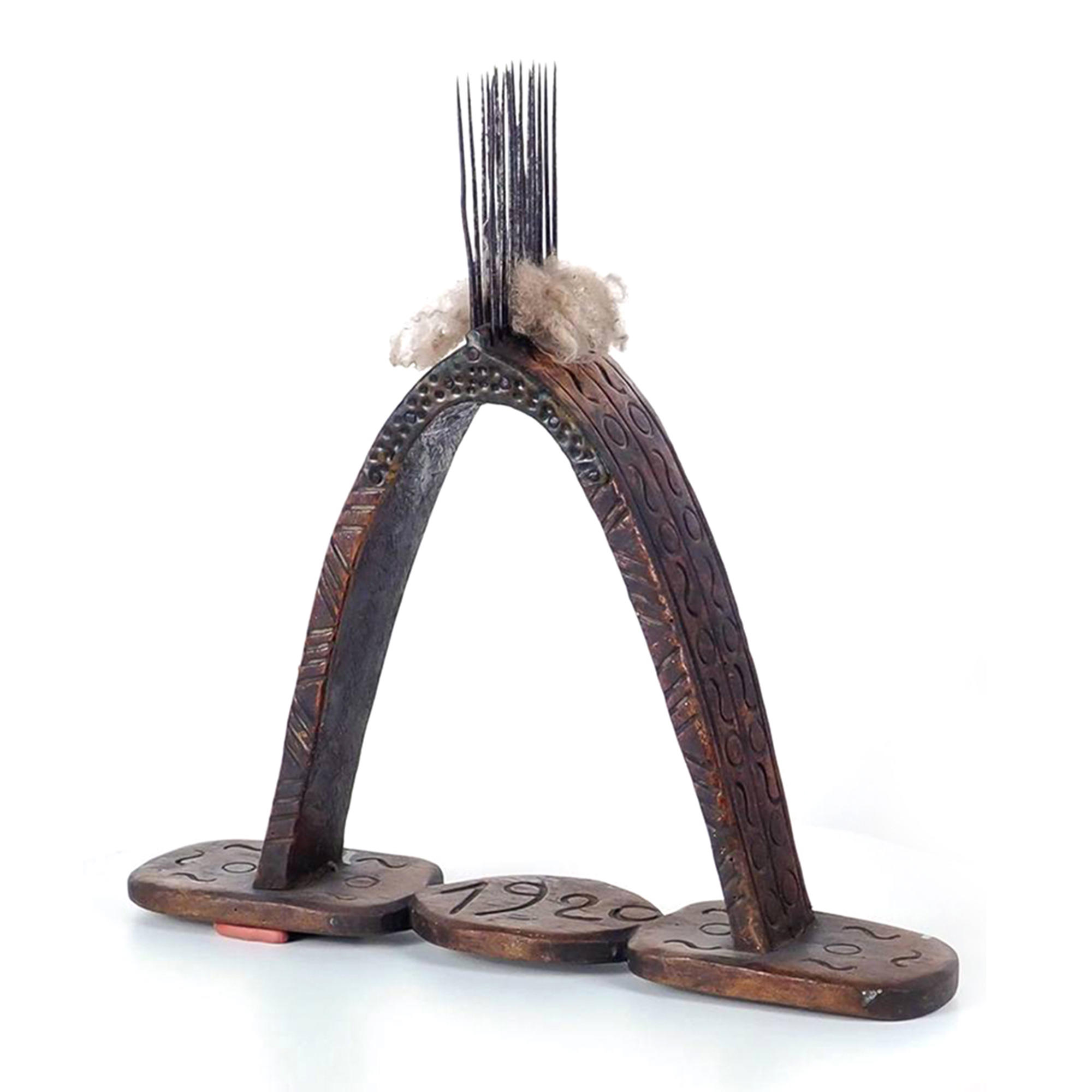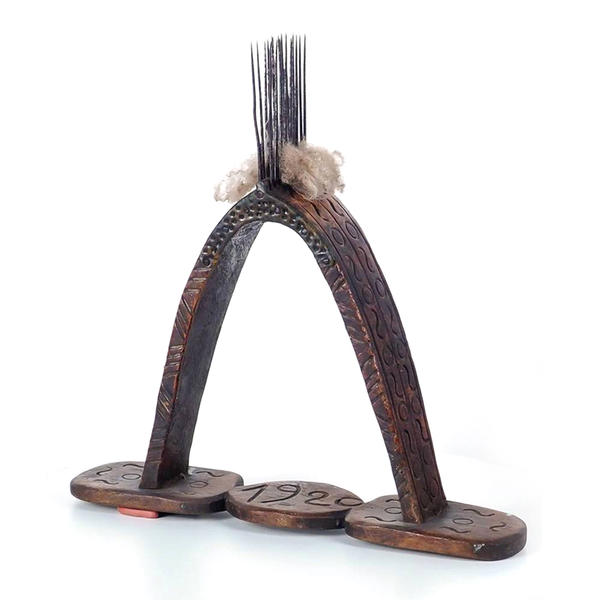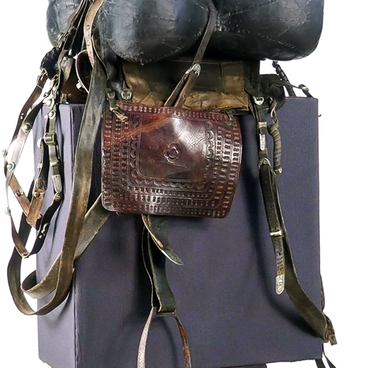The production of homespun cloth consisted of many labour-intensive processes. First of all, the quality of the material depended on the starting crude, so the Adyghes paid great attention to shearing and wool gathering.
Wool comb
Creation period
Late 19th century
Technique
Wood, metal. Carving, forge work
Exhibition
10
Open in app#1
Wool comb
#4
#2
It was custom to shear sheep twice a year: in April and September. The wool of the autumn shearing ‘tsy’ was considered more valuable, therefore it was used to make good-quality burkas (sleeveless raincoats) ‘klaklo’, chokhas ‘tsye’, shirts ‘dzhan’, trousers ‘gonchedzh’, bashlyks (hoods) ‘shkharykhon’ and other details of male and female costumes.
The spring wool ‘patse’ was used for stuffing mattresses and pillows, as well as for creating coarse felt products: gun slips ‘shkhonchyl’, bedding ‘kleubgon’, saddlecloth ‘one chladz’ and so on.
In addition to the gathering time, the quality of wool depended on the sex and age of the sheep, as well as the climate in which they lived throughout the year. The Adyghes found out that in dry periods the wool of adult sheep was worse than in rainy periods, but lambs, on the contrary, gave better wool in dry years.
After gathering and preparing, they began to comb the wool on the comb called ‘tsypkh’ — a triangular board with metal teeth. While combing, they sorted the wool into lateral and transverse threads. After that, it was fluffed with a ‘luchok’ — an arched stick, the ends of which were connected by a thin rope.
The spring wool ‘patse’ was used for stuffing mattresses and pillows, as well as for creating coarse felt products: gun slips ‘shkhonchyl’, bedding ‘kleubgon’, saddlecloth ‘one chladz’ and so on.
In addition to the gathering time, the quality of wool depended on the sex and age of the sheep, as well as the climate in which they lived throughout the year. The Adyghes found out that in dry periods the wool of adult sheep was worse than in rainy periods, but lambs, on the contrary, gave better wool in dry years.
After gathering and preparing, they began to comb the wool on the comb called ‘tsypkh’ — a triangular board with metal teeth. While combing, they sorted the wool into lateral and transverse threads. After that, it was fluffed with a ‘luchok’ — an arched stick, the ends of which were connected by a thin rope.
#9
Extant are ancient Adyghe songs that combers would sing at work.
«Comb, comb — sword sharp!
Old women at it are
without shawls on their heads,
Girls at it are combers arduous’
Old women at it are
without shawls on their heads,
Girls at it are combers arduous’
#11
«He who gathered us to comb the wool
Is responsible for our suffering,
He who gathered us to comb the wool
Is responsible for our suffering»
Is responsible for our suffering,
He who gathered us to comb the wool
Is responsible for our suffering»
«We are combing [wool] for a burka
for he who brings hunted game.
We are combing [wool] for a burka
for he who brings hunted game’
for he who brings hunted game.
We are combing [wool] for a burka
for he who brings hunted game’
#10
The processed wool was spun either on a spindle or on a spinning-wheel. The Adyghe weaving loom had such a simple working principle that even girls could work on it. Looms were horizontal, so the craftswomen were sited during work and therefore got less tired.
The woven cloth was laid on a wattle fence and drenched with hot water, fulled. Several people stood on the flattened-out cloth and trampled it with their feet for 8-10 hours. That was difficult to do, so the craftswomen resorted to the help of teenage boys and men.
The Adyghes dyed the finished cloth in natural colours: black, brown, grey, fallow, yellow-green. The necessary dyes were made from oak and alder bark, mineral dyes. The Circassians especially appreciated the fine cloth of white and grey colours. Members of wealthy families sewed clothes from it.
The woven cloth was laid on a wattle fence and drenched with hot water, fulled. Several people stood on the flattened-out cloth and trampled it with their feet for 8-10 hours. That was difficult to do, so the craftswomen resorted to the help of teenage boys and men.
The Adyghes dyed the finished cloth in natural colours: black, brown, grey, fallow, yellow-green. The necessary dyes were made from oak and alder bark, mineral dyes. The Circassians especially appreciated the fine cloth of white and grey colours. Members of wealthy families sewed clothes from it.
read morehide
00:00
00:00
1x
Wool comb
Creation period
Late 19th century
Technique
Wood, metal. Carving, forge work
Exhibition
10
Open in app
Share



